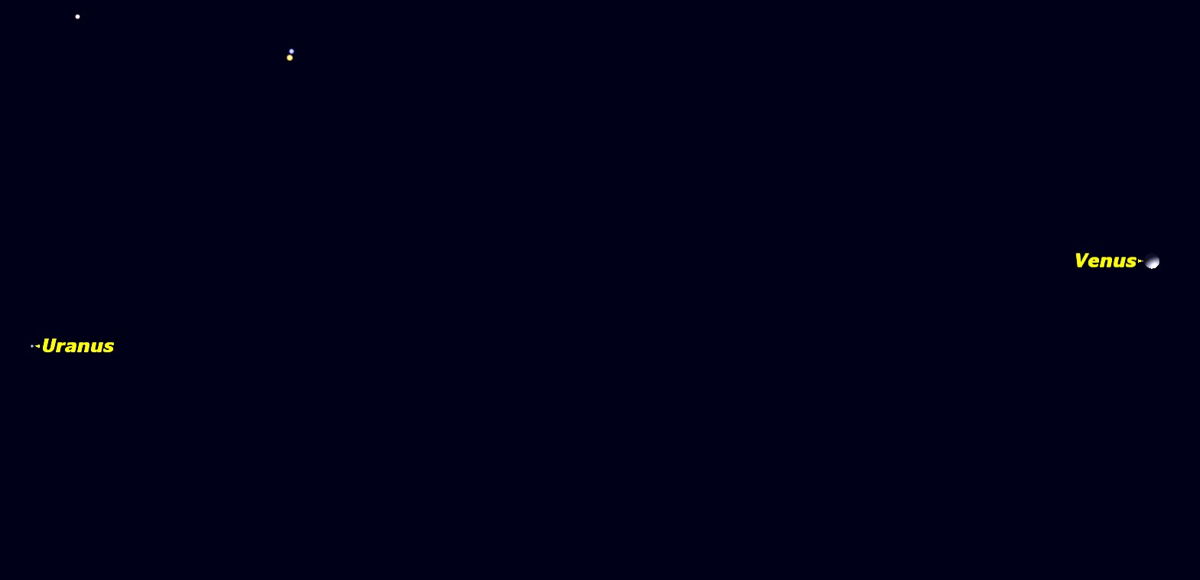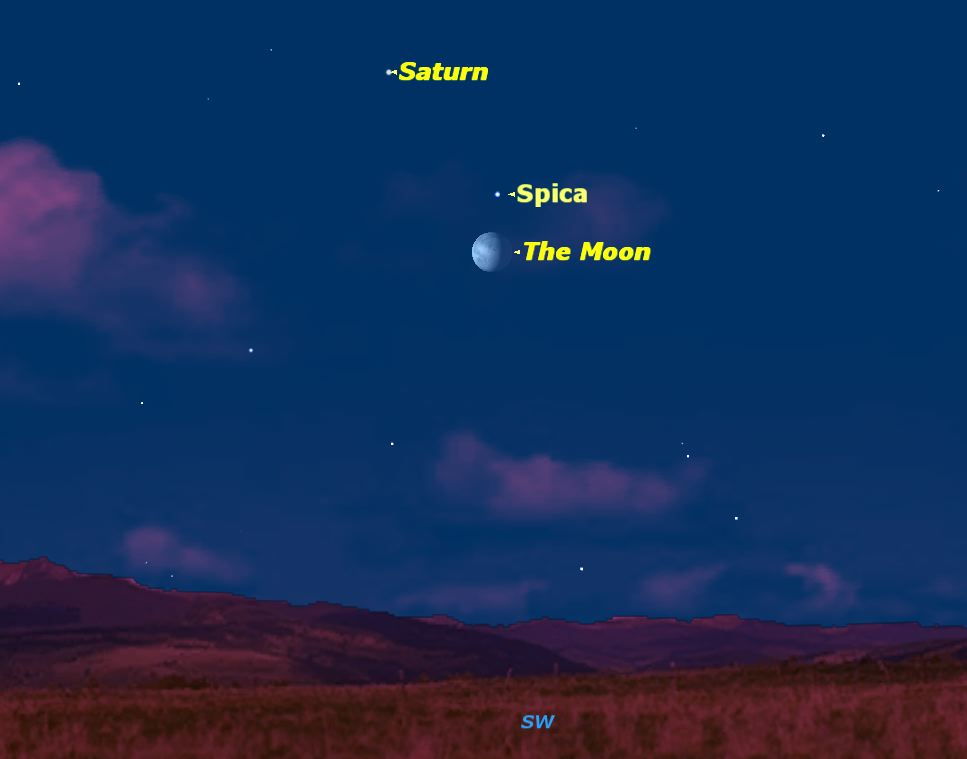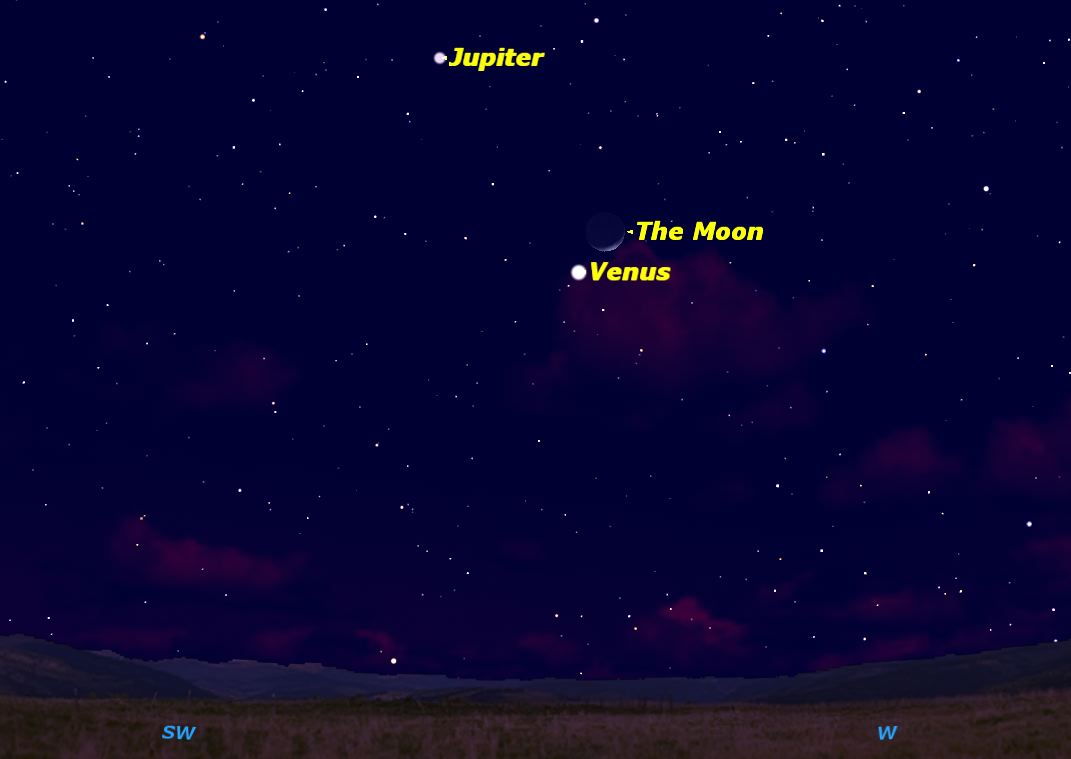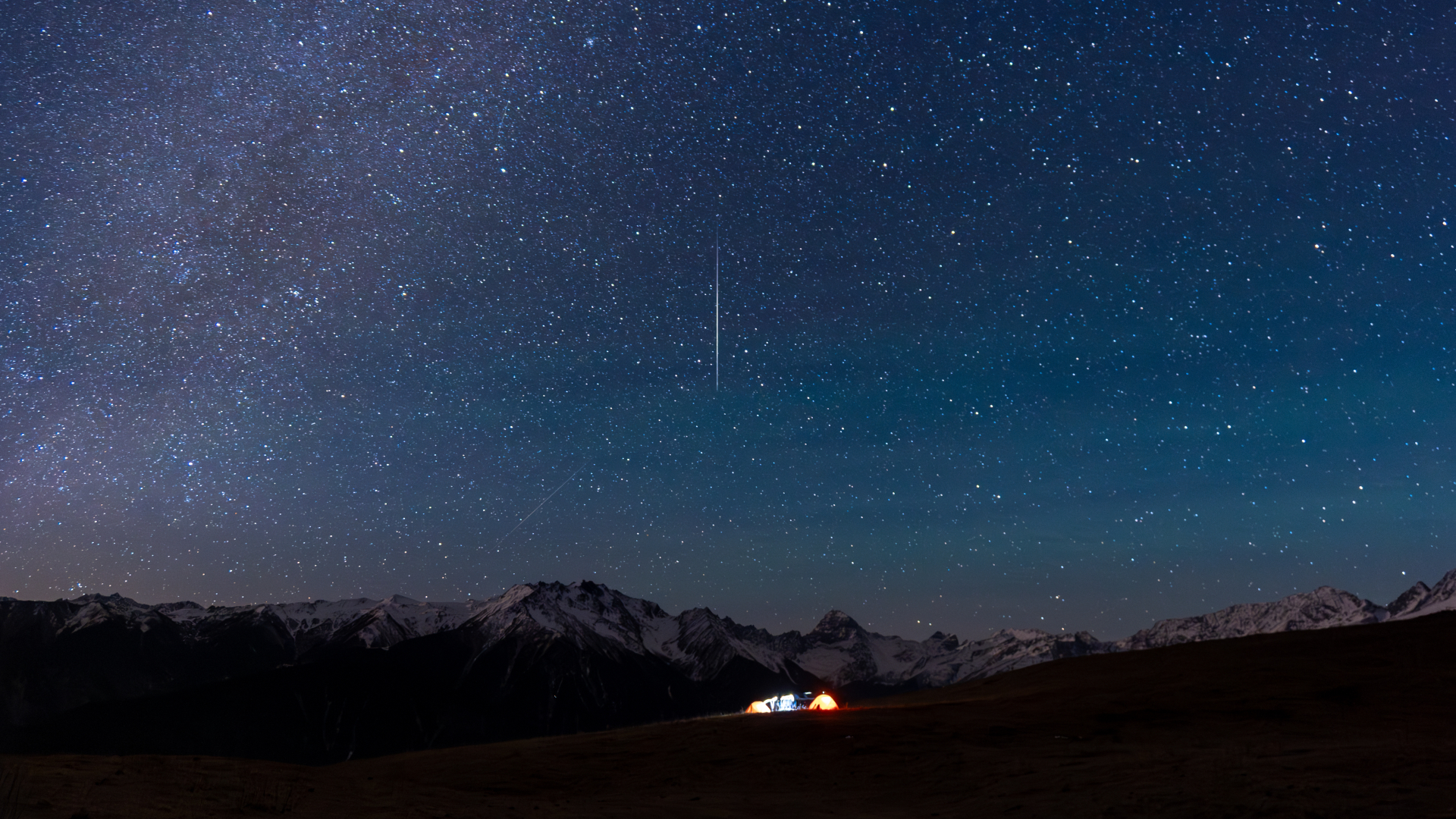Skywatching Events for February 2012
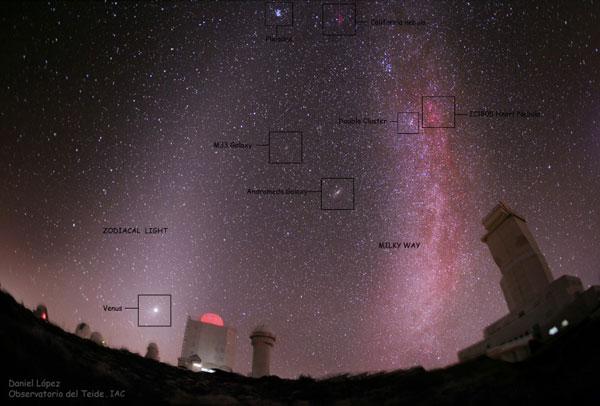
In February 2012, skywatchers can enjoy views of the zodiacal light, and see Venus and Uranus together in a small telescope. Here's a handy guide to the bountry of skywatching targets this month:
Moon Phases
Tue., February 7, 4:54 p.m. EST
Full Moon
The Full Moon of February is usually called the Wolf Moon. In Algonquian it is called Snow Moon. Other names are Hunger Moon, Storm Moon, and Candles Moon. In Hindi it is known as Magh Poornima. Its Sinhala (Buddhist) name is Navam Poya. The Full Moon rises around sunset and sets around sunrise, the only night in the month when the Moon is in the sky all night long. The rest of the month, the Moon spends at least some time in the daytime sky.
Tue., February 14, 12:04 p.m. EST
Last Quarter Moon
Breaking space news, the latest updates on rocket launches, skywatching events and more!
The Last or Third Quarter Moon rises around 1 a.m. and sets around 11 a.m. It is most easily seen just after sunrise in the southern sky.
Tue., February 21, 5:35 p.m. EST
New Moon
The Moon is not visible on the date of New Moon because it is too close to the Sun, but can be seen low in the east as a narrow crescent a morning or two before, just before sunrise. It is visible low in the west an evening or two after New Moon.
Wed., February 29, 8:21 p.m. EST
The First Quarter Moon rises around 10:30 a.m. and sets around 2 a.m.
Observing Highlights
Fri., February 10–Fri. February 24, evening
Zodiacal Light
The dim glow of the zodiacal light, caused by sunlight illuminating interplanetary dust, can be seen in the western sky after the end of evening twilight.
Thu, February 9, evening twilight
Venus 0.3 degrees north of Uranus
These two planets will be in the same field of view in a small telescope.
Sun., February 12, morning twilight
Saturn, Spica, and the Moon
A pretty grouping of the planet Saturn, the bright star Spica, and the waning gibbous Moon.
Sat. and Sun., February 25 and 26, evening twilight
Jupiter, Venus, and the Moon
On successive nights, the Moon will be close to the planets Venus and Jupiter.
Planets
Mercury will be well placed as an evening “star” during the last week of February.
Venus is a brilliant object in the evening sky after sunset all month. The waxing crescent Moon will pass close to Venus on Sat. February 25.
Mars returns to Leo on February 4. It grows in size from 12 arc seconds to 14 arc seconds during the month, as large as it will get during this apparition. By the end of the month it reaches magnitude –1.2, heading towards opposition on March 3 and its closest approach to Earth on March 5. Mars rises around 9 p.m. and shines brightly the rest of the night.
Jupiter continues to be well placed in the evening sky all month in Aries. Jupiter and Venus are the brightest objects in the evening sky other than the Sirius and the Moon.
Saturn rises around midnight, and is visible the rest of the night. It now shines brighter than nearby Spica.
Uranus is close to Venus on February 9, but is sinking low in the western sky.
Neptune is too close to the Sun to observe, being in conjunction with the Sun on February 19.

Geoff Gaherty was Space.com's Night Sky columnist and in partnership with Starry Night software and a dedicated amateur astronomer who sought to share the wonders of the night sky with the world. Based in Canada, Geoff studied mathematics and physics at McGill University and earned a Ph.D. in anthropology from the University of Toronto, all while pursuing a passion for the night sky and serving as an astronomy communicator. He credited a partial solar eclipse observed in 1946 (at age 5) and his 1957 sighting of the Comet Arend-Roland as a teenager for sparking his interest in amateur astronomy. In 2008, Geoff won the Chant Medal from the Royal Astronomical Society of Canada, an award given to a Canadian amateur astronomer in recognition of their lifetime achievements. Sadly, Geoff passed away July 7, 2016 due to complications from a kidney transplant, but his legacy continues at Starry Night.

